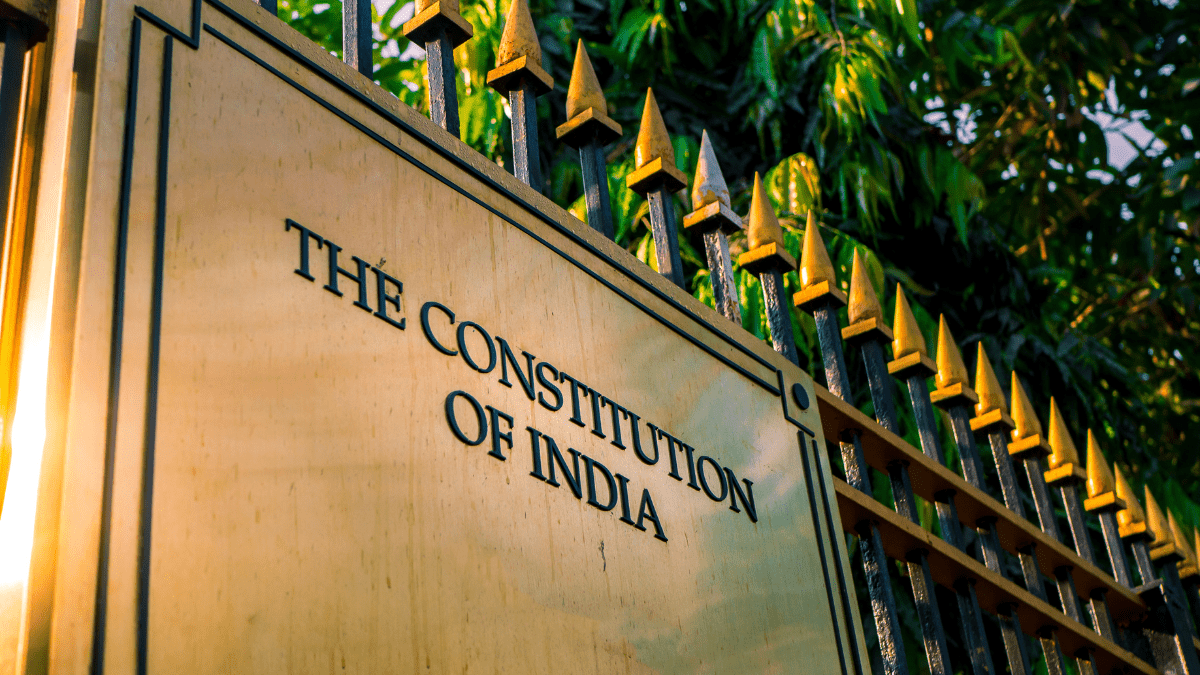History of Constitution of India: Before 1947, India had two main parts – one was British India with 11 provinces, and the other was made up of Princely states governed by Indian princes through a subsidiary alliance policy. When these two came together, they formed the Indian Union. However, even today, we still see many of the systems from the British India era persisting. The roots and development of the Indian Constitution can be linked back to various regulations and acts that were passed before India gained independence.
Table of Contents
Evolution – History of Constitution of India
There are various layers in the background of the Indian Constitution:
Regulating Act of 1773
- The British Parliament decided to regulate the East India Company’s affairs in India.
- The Governor of Bengal (Fort William) was named the Governor-General of Bengal, with Warren Hastings as the first appointee.
- An Executive Council was formed for the Governor-General, consisting of four members, but there was no separate legislative council.
- The Act brought the Governors of Bombay and Madras under the authority of the Governor-General of Bengal.
- The Supreme Court was established in Fort William (Calcutta) in 1774.
- It prohibited East India Company servants from private trade or taking bribes.
- The Court of Directors had to report company revenue.
Pitt’s India Act of 1784
- Distinguished between the commercial and political functions of the East India Company.
- Commercial functions were handled by the Court of Directors, and political affairs by the Board of Control.
- Reduced the Governor General’s council to three members.
- Placed Indian affairs under direct British Government control.
- Company territories in India were termed “the British possession of India.”
- Governor’s councils were established in Madras and Bombay.
Charter Act of 1813
- Ended the East India Company’s monopoly on Indian trade, allowing trade with India for all British subjects.
Charter Act of 1833
- Governor-General (of Bengal) became the Governor-General of India, with Lord William Bentinck as the first.
- Initiated centralization in British India.
- Established a Central legislature, removing legislative powers from Bombay and Madras provinces.
- Transformed the East India Company into a purely administrative body.
Charter Act of 1853
- Separated the legislative and executive functions of the Governor-General’s Council.
- Introduced open competition for recruiting civil servants (Indian Civil Service open for all).
Government of India Act of 1858
- Replaced the East India Company’s rule with Crown rule in India.
- Secretary of State for India exercised Crown powers, assisted by the Council of India.
- Viceroy appointed as the Crown’s agent, with Lord Canning as the first Viceroy.
- Abolished Board of Control and Court of Directors.
Indian Councils Act of 1861
- Introduced Indian representation in Viceroy’s executive and legislative councils.
- Legislative councils established in centers and provinces.
- Allowed non-official members in the Viceroy’s Executive Council for legislative business.
- Restored legislative powers to Bombay and Madras Provinces.
India Council Act of 1892
- Introduced indirect elections (nomination).
- Enlarged legislative councils’ size and functions, giving them the power to discuss the Budget and address questions to the Executive.
Indian Councils Act of 1909 (Morley-Minto Reforms)
- Introduced direct elections to legislative councils.
- Increased Central Legislative Council members to 60.
- Implemented communal representation for Muslims with a separate electorate.
- Indians included in the Viceroy’s executive council (Satyendra Prasanna Sinha).
Government of India Act of 1919 (Montague-Chelmsford Reforms)
- Demarcated Central and Provincial subjects.
- Introduced ‘Dyarchy’ in Provincial subjects.
- Bicameralism introduced at the center with a Legislative Assembly and Legislative Council.
- Three of six members of the Viceroy’s Executive Council (excluding Commander-in-Chief) to be Indians.
- Established the Public Service Commission.
Government of India Act of 1935
- Envisaged an All-India Federation, which never materialized.
- Divided powers between Centre and units into Federal, Provincial, and Concurrent Lists.
- Residuary powers vested with the Governor-General.
- Abolished Dyarchy in Provinces and introduced Provincial Autonomy.
- Introduced bicameralism in six Provinces.
- Established the Federal Court.
- Abolished the Council of India.
Indian Independence Act of 1947
- Declared India as an Independent and Sovereign State.
- Established responsible Governments at the Centre and Provinces.
- Designated the Viceroy India and provincial Governors as constitutional heads.
- Assigned dual functions (Constituent and Legislative) to the Constituent Assembly, declaring it a sovereign body.
Read Also: Torts and its Characteristics




